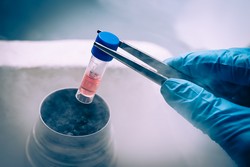Stem cells to stem stroke aftermath
Recent findings showed that intravenous administration of a particular type of stem cell, the bone marrow stromal cells (BMSCs), has a neuroprotective effect after experimental ischaemic stroke. However, over 99 % of cells are trapped in the lung, spleen and kidneys, resulting in potentially serious ectopic side-effects. Previous research has demonstrated that transplantation of BMSCs to the cerebrospinal fluid compartment (CSFC), instead of intravenous administration, reduces post-ischaemic brain damage. The current EU-funded STEMFORSTROKE (Secretome analysis of intrathecally applied bone marrow stromal cells in experimental stroke) project studied the therapeutic potential and the safety profile of BMSCs after ischaemic stroke upon transplantation into the CSFC. The development of a novel mouse stroke model with increased post-stroke life span was very important for project success. Using this model, researchers found that BMSCs and small molecule traceres distribute through the entire CSFC after a single intracerebroventricular injection. Thus, the cerebrospinal fluid can support stem cells survival and carry large molecules deep into the brain parenchyma. In general, it means that CSFC could be an efficient route for drug delivery to the injured parenchyma. Evaluation of BMSC therapeutic potential using the new mouse model revealed that only BMSCs containing a monocytic component were able to reduce post-ischaemic neurological damage. Injected BMSCs increased activation of the complement system as well as the production of other regulatory molecules in the CSF. Importantly, proteomic data showed that the in vivo secretome of BMCSs is significantly different from findings previously reported in in vitro experiments. These outcomes highlight the need for in vivo testing of BMSCs and other stem cells for biomedical applications.







